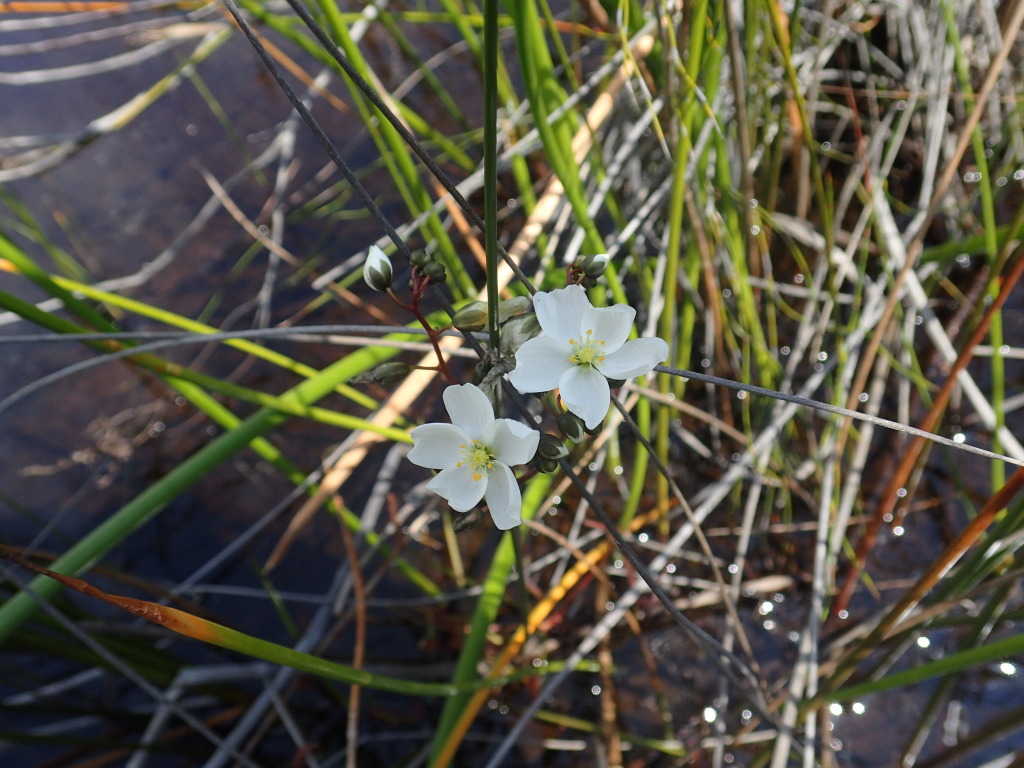Drosera binata
Labill.Nov.Holl Forked SundewTuber absent. Stem reduced, stolons often present. Leaves in basal rosette, erect; petiole slender, 4–30 cm long, glabrous; lamina once to twice divided into narrowly linear lobes 2–10 cm long, curled inwards when young; stipules membranous, 3–5 mm long. Inflorescences 1 or 2, up to 3-branched, each branch a 15–30-flowered raceme, to 50 cm long; bracts linear, 1–2 mm long; pedicels 5-mm long; sepals 5, ovate, 6–7 mm long, glabrous, margin ± entire to serrulate, apex acute or laciniate; petals 5, obovate, 9–14 mm long, white; styles 3, each 1–2.5 mm long, with a few dichotomous branches. Flowers mainly Sep.–Mar.
GleP, Brid, VVP, GipP, OtP, WaP, Gold, CVU, GGr, DunT, EGL, EGU, WPro, HSF, HNF, OtR, Strz, MonT, VAlp. Also SA, Qld, NSW, Tas. New Zealand. Occurs in swamps with wet sand and sandy peat, on creekbanks and rocky ledges.
Drosera binata is a species complex, with several named varieties. Lowrie et al. (2017) note that the current taxonomy of the complex is deficient, and that the complex is undergoing revisionary work and that it is likely to change significantly. The name Drosera pedata Pers. pre-dates D. binata and would have nomenclatural priority if it is conspecific (Mabberley 2018), but further work is required to determine if this is the case.
Lowrie, A., Robinson, A., Nunn, R., Rice, B., Bourke, G., Gibson, R., McPherson, S., & Fleischmann, A. (2017). Drosera of the World. Redfern Natural History Productions. Poole, Dorset, England.
Mabberley, D.J. (March 2018). An inconvenient truth? Notes on Australian plants in Persoon's Synopsis plantarum 1805–1807. Australian Systematic Botany Society Newsletter 174:7–10.
Conn, B.J. (1996). Droseraceae. In: Walsh, N.G.; Entwisle, T.J., Flora of Victoria Vol. 3, Dicotyledons Winteraceae to Myrtaceae, pp. 356–361. Inkata Press, Melbourne.
 Spinning
Spinning




